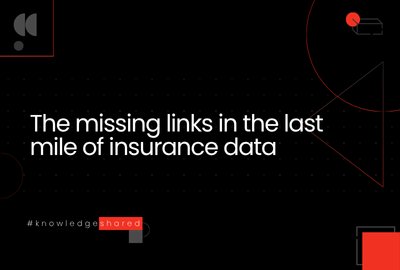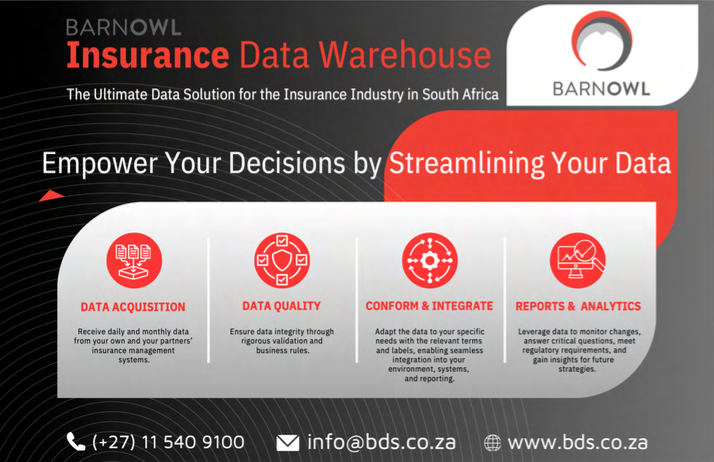The missing links in the last mile of insurance data

The insurance industry has made remarkable progress in digitisation and data adoption, yet one stubborn challenge remains: bridging the “last mile” of data.
Angus Black, co-founder of BarnOwl Data Solutions and a veteran of short-term insurance technology, calls this the most critical phase in unlocking reliable, usable, and value-creating data. Drawing from his experience in working with over 30 different insurance management systems and more than 500 brokers, Angus highlights two essential “links” that determine success: the human link and the technology and process link.
The human link and meaningful engagement with brokers - At the heart of the last mile is the broker. For Angus, success begins with engaging meaningfully with these primary data sources. While brokers may not always be the direct customers of data solution providers, they are pivotal to the quality and consistency of the information that enters the system.
Every broker has unique nuances, different ways of working, bespoke products, and varying timelines. Ignoring these differences leads to misunderstandings and poor data capture. As Angus explains, one of the most common frustrations among brokers is the “black hole” syndrome: they send data off into systems but receive no feedback on whether it was valuable, usable, or flawed. When errors are eventually uncovered, they often surface as major catastrophes rather than manageable issues.
To avoid this, Angus stresses the importance of establishing clear feedback loops and rules of engagement from the start. Who is responsible if data is late or flawed? What are the escalation points when things go wrong? And how do you ensure continuous alignment as regulations and compliance requirements evolve? Data that was once considered acceptable may no longer meet current standards, particularly as rating requirements and regulatory frameworks shift.
Improving data quality is not a one-off exercise. It requires ongoing collaboration, transparency, and, where possible, supplementation with external data sources. The human link, therefore, is not just about supplying data but about fostering trust, communication, and accountability between brokers, insurers, and technology providers.
The technology and process link - Alongside human engagement, robust technology and processes are non-negotiable. “Whatever data process you’re building, it needs to be repeatable and consistent,” Angus says. Inconsistency is a recipe for confusion and conflict.
For example, nothing undermines confidence faster than telling a broker their data was fine yesterday but suddenly unacceptable today. This inconsistency not only damages relationships but also destabilises the data pipeline. To counter this, Angus argues for the adoption of shared data standards across the value chain. Something as simple as defining whether gross written premium includes commission, fees, or VAT must be clear, uniform, and universally adopted. Without this, insurers risk different teams working off different interpretations of the same metric.
Automation plays a key role in supporting consistency. Automated validation and immediate feedback ensure that issues are flagged quickly, while brokers still have the data top of mind. The feedback should be detailed and constructive, “this date can’t be valid because it conflicts with another field”, rather than generic statements that leave the broker guessing.



